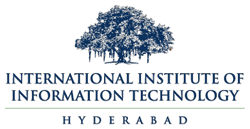The IAStructE – IIIT Hyderabad Student Chapter of the Earthquake Engineering Research Centre (EERC), recently planned an insightful educational visit to a precast construction site in Hyderabad on 22 February. The event was organized by Dr. Shubham Singhal and attended by postgraduate students, which provided a valuable hands-on learning experience.

The visit commenced with an engaging introductory session led by Mr. Pavan Patchigolla, Principal Structural Engineer at PossiBuild Building Technologies, Hyderabad. Mr. Patchigolla and his engineering team provided a detailed overview of precast and prestressed construction methodologies. They highlighted the significant advantages of these methods, including accelerated construction timelines, cost-effectiveness, superior quality control, and a reduction in on-site labour demands. Participants gained comprehensive knowledge of the manufacturing, transportation, and installation processes for various precast components, such as beams, columns, and slabs. A key focus of the visit was the demonstration of moment-resisting beam-column connections designed to withstand seismic loads, particularly in structures with long spans. The engineering team further explained the implementation of Double-T and hollow-core slabs, which were employed to minimize weight and enhance structural efficiency. The application of prestressing to minimize deflection and improve overall structural performance was also thoroughly discussed. The session paid particular attention to the use of wet joints for improved moment resistance. The team emphasized the avoidance of dry joints due to their inherent poor ductility.
The engineering team explained in detail the importance of proper connections in precast structures, especially column connections (where corrugated tubes were embedded inside the columns to accommodate reinforcement bars), the use of maintaining the gap between the column base and foundation to ensure uniform load transfer and later filling the gap with high-strength and non-shrink grout. The significance of self-compacting grout in the corrugated tubes was also highlighted to ensure proper bonding and structural continuity. Further, the role of corbels was clarified to support the beams and effectively transfer shear forces while accommodating the resulting bending moments. Diverse beam types, including L-shaped and T-beams, were also observed, which serve distinct structural purposes. The visit concluded with an interactive Q&A session, where students discussed design challenges, durability, and innovations in precast construction. The team also highlighted that the slabs are not explicitly designed for seismic resistance, whereas beams and columns play a crucial role in lateral load transfer.
Overall, the visit provided insights into precast and prestressed construction. The visit successfully bridged the gap between theoretical knowledge and practical application, offering students and faculty a first-hand look at cutting-edge construction techniques. The visit also fostered a deeper understanding of modern construction practices and their potential to improve the efficiency and resilience of future structures. Further, the students gained hands-on exposure to design, fabrication, and construction techniques, strengthening their understanding of structural engineering.
February 2025

